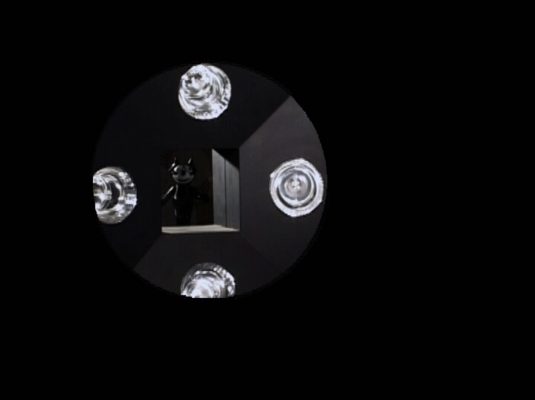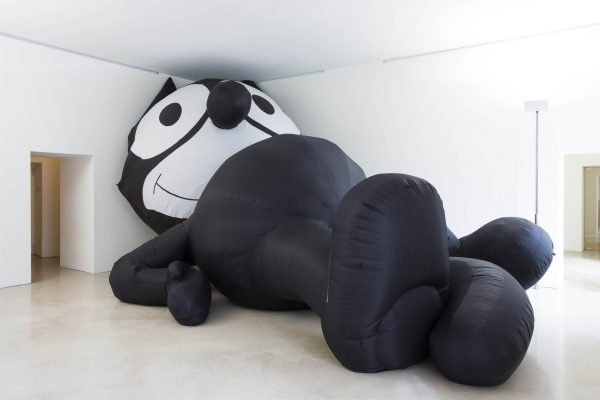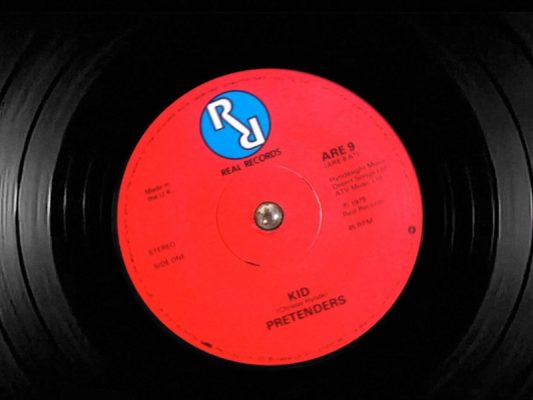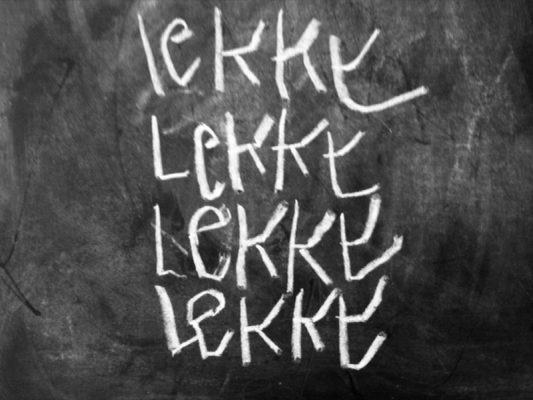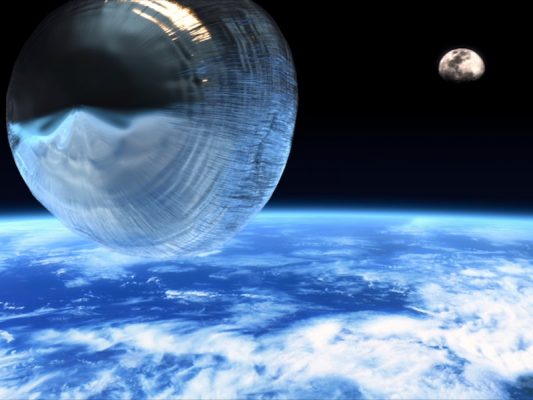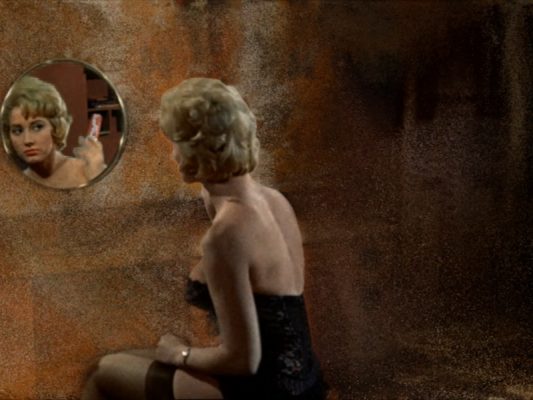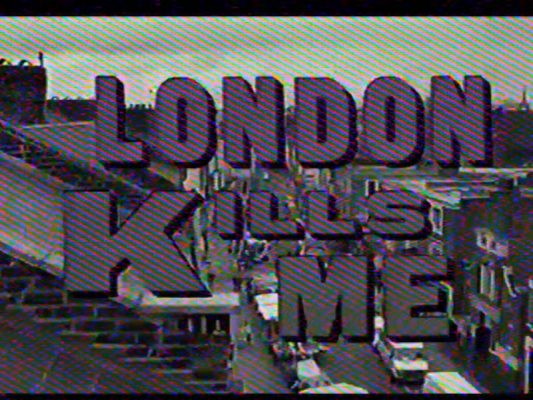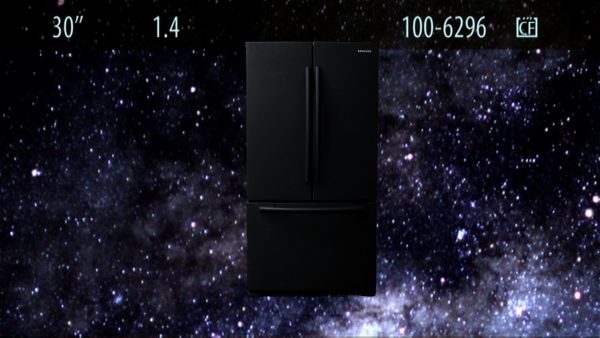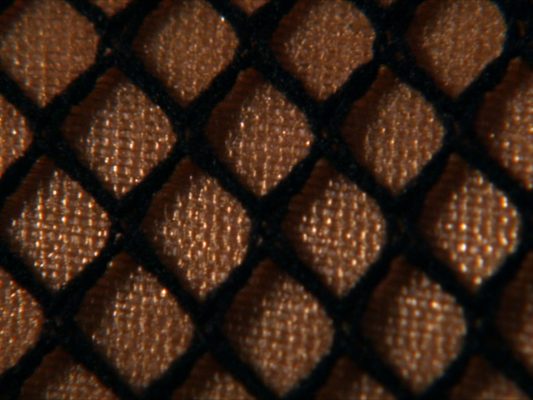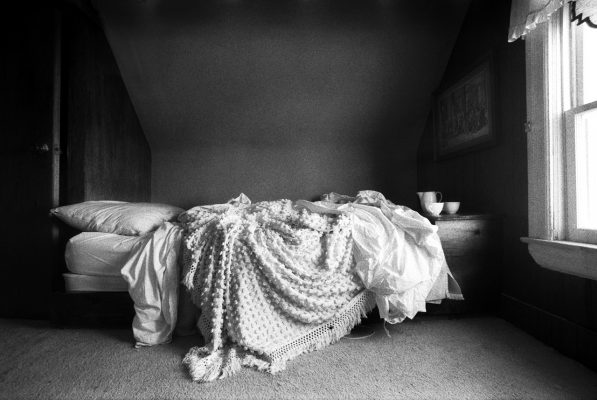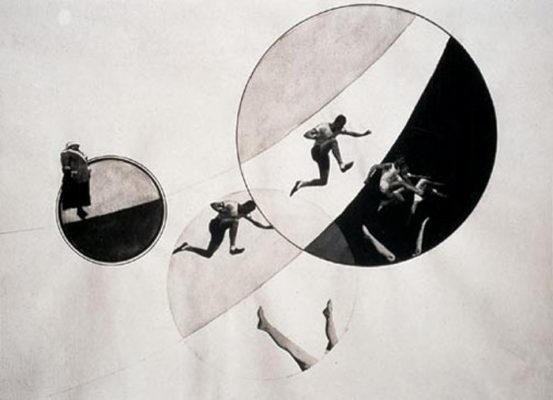‘A Sound System, like the property of any system, is the interaction of the sum of its parts.’ — Mark Leckey, ‘OdooDem’ (2012/2016)
About thirty years since the flowering of rave culture in the United Kingdom and the end of Margaret Thatcher’s tenure as Prime Minister, the sounds and images of late 1980s pop culture — from 808 hits to mid-period Dr. Who — can still be found jammed together in the interdisciplinary work of the artist Mark Leckey and music group The KLF. Leckey, winner of the 2008 Turner Prize, recently made waves with his first United States retrospective, Containers and Their Drivers at MoMA PS1 in Queens, New York. The KLF, meanwhile, have returned in 2017 after a twenty-plus-year hiatus, having released a somewhat mysterious video in January, then announcing a forthcoming book. Reared during the punk era and active participants in rave, these artists, in their work, appropriate not only the specific sounds and images of Thatcher-era English culture, but also the ritual-like energy that coursed through it. Punks and ravers both resisted authority in their own ways, using and abusing their own lexicon of particular cultural symbols. Can the decadent landscapes of media symbols that Leckey and The KLF assemble become sites of resistance as well?
In exhibitions like Containers and Their Drivers, which gave a wide-ranging survey of the artist’s twenty-year practice, Leckey displays appropriated images and objects drawn from disparate parts of contemporary life: refrigerators, LP covers, highway overpasses, Felix the Cat. We see these images and objects in various forms on screens, as sculptural forms, and printed on posters — highlighting their ability to adapt to (and thereby saturate) different life contexts. More than the sheer presence of the images, Leckey’s investigations into the histories of their consumption makes viewers renegotiate their relationship to a media-inured culture.
Leckey’s interest in appropriation is rooted in the work that made his name, the 15-minute video ‘Fiorucci Made Me Hardcore’ (1999). A rhythmic splice-up of found footage, ‘Fiorucci’ documents British dance music culture from the 1970s onwards, highlighting the spaces in which various subcultures danced, the outfits they wore, and the ways they moved around Thatcher-era England. Leckey leaves much of the footage untouched, his artistic input largely restricted to manipulating the soundtrack — a sampled mix of dance music, distended and spaced-out such that the video, for all its visual energy, ends up quieter and more reflective than it seems at first. The display at PS1 aided this duality of the ecstatic and the cogitative: ‘Fiorucci’ was shown in a black room, the screen flanked by massive speakers. As the video progressed, the room felt alternately like a nightclub and a temple.
The dancers in ‘Fiorucci’ underline how we commune with, and define ourselves through, cultural ‘images’ — whether a song, a fashion brand, or Felix, Leckey’s favourite motif. In the same room as a large inflatable ‘Felix the Cat’ (2013), Leckey included a photograph of a man hiding in a Felix costume. It was as if the artist were watching you view his art, or had himself been absorbed into pop culture. A montage of images from Instagram simultaneously featured people posing with the inflated Felix. Viewing Containers and Their Drivers, it was impossible not to think about yourself as part of a larger art-viewing mass, part of which is on display in the video montage, part of which is next to you — people posting their own Instagrams.
Many of Leckey’s newer works are less ecstatic than ‘Fiorucci’, though, and less inviting than the Felix piece. Among these is ‘GreenScreenRefrigerator’ (2010-2016), an installation in which an obelisk-like Samsung refrigerator sits in front of a green screen, surrounded by Samsung speakers and other Samsung devices — television, phone, tablet — that play video of the refrigerator superimposed on computer-generated backdrops. Where Leckey had delighted in how British ravers of the 90s reclaimed brands like Fiorucci for their own identities, he seems to have grown wary in the ensuing years of brands’ subtle takeover of our everyday experience. A modulated voice came from the refrigerator, anthropomorphising the object in a manner as portentous as it was uncanny.
In this view, Leckey’s work visualises what the British writer Mark Fisher called ‘capitalist realism’. Fisher defined capitalist realism as ‘the widespread sense that not only is capitalism the only viable political and economic system, but also that it is now impossible even to imagine a coherent alternative to it.’ The immersive Samsung environment of ‘GreenScreenRefrigerator’ illustrates the often-invisible flow of concentrated capital that surrounds us; the household objects-cum-art might also reflect what Fisher termed capitalism’s ‘system of equivalence’, which ‘can assign all cultural objects … a monetary value’. Leckey’s modes of display — especially The Universal Addressability of Dumb Things (2013-2016), which featured everyday goods mingling with fine art — often recall showrooms, suggesting not just the ‘addressability’ of ‘dumb things’ but their sale-ability as well.
Still, the joy and nostalgia coursing through Leckey’s art implies some faith in images and objects under capitalism. Fisher may have seen a similar light: ‘What needs to be kept in mind,’ he wrote of life during capitalist realism, ‘is both that capitalism is a hyper-abstract impersonal structure and that it would be nothing without our cooperation.’ The familiar images of Containers and Their Drivers concretised these abstractions and suggested viewers’ cooperation in consumption. With this kept in mind, could we summon a ‘greater will’ — a collective energy that Fisher believed could fight the superstructure?
*
On 1 January, 2017 a video called ‘WTF FOUND VHS’, attributed to British dance music group The KLF, was posted to YouTube. A 46-minute assemblage of clips, ‘WTF FOUND VHS’ seemed to be the group’s first ‘original’ work since disbanding in 1995. Although it turned out to be a fan-made piece from 2015, it nevertheless made the news, signalling the band’s return after years outside the public eye. (Since then, they have announced a new book, 2023: A Trilogy, to be released in August 2017.)
‘WTF FOUND VHS’ opens with a flashing montage of copyright warnings — the type you see before the start of a movie on VHS or DVD. The montage comes across as a playful affront to the distribution laws that The KLF have flouted throughout their career, through tireless and often illegal sampling. Just as their videos and music — from early hip-hop under the name The Justified Ancients of Mu Mu to their dreamy 1990 LP Chill Out — are marked by the heavy presence of work by other people, ‘WTF FOUND VHS’ features a dizzying attack of pop music videos, BBC clips, and television shows interspersed with old KLF videos, live performances, and publicity stunts. The selection of era-specific pop cultural material is spliced and remixed to create a biographical narrative — albeit a confounding, non-linear one — much like in Leckey’s ‘Fiorucci’ or, even more, ‘Dream English Kid 1964-1999 A.D.’ (2015).
As the clips in ‘WTF FOUND VHS’ pile up at a discomfiting rate, it becomes difficult to process their content, though visual patterns emerge that link the cultural ephemera. The beginning montage uses this effect to undermine its own claims; it highlights the aesthetic differences in the designs of the copyright notices, and shows them at a speed that reveals how we don’t second-guess their authority. The notices thereby play as an illustration of capitalist realism. ‘Capitalist realism can only be threatened if it is shown to be in some way inconsistent or untenable,’ Fisher writes; ‘if, that is to say, capitalism’s ostensible “realism” turns out to be nothing of the sort.’ Within seconds of ‘WTF FOUND VHS’, the systems that govern art and society are portrayed as a ubiquitous, yet inconsistent stream of images. We see that, in Fisher’s words, ‘what counts as “realistic” … is defined by a series of political determinations.’ ‘WTF FOUND VHS’, like much of The KLF’s work, attempts to expose and undermine these ‘political determinations’ — to work outside of them, or even to burn them, like the group famously burning one million pounds in 1994.
Although The KLF — comprised of music industry veterans Bill Drummond and Jimmy Cauty — took every opportunity to upend pop culture and expose its capitalist framework, it was always clear that they, like Leckey, had a passion for the material they were lampooning. In 1988 they released The Manual (How to Have a Number One the Easy Way), a manifesto-like book that gave practical and creative advice on how to score a hit song in the United Kingdom — something the duo had done in 1987 when their novelty band The Timelords hit Number One with ‘Doctoring the Tardis’, a Dr. Who–themed riff on ‘Rock ’n’ Roll, pt. 2’. While The Manual breaks pop music down to a capital-driven formula and pokes fun at its soulless practitioners, the degree to which Drummond and Cauty analyse and valorise certain songs, like ‘Never Gonna Give You Up’ by Rick Astley, betrays the duo’s engaged pop-music listening and general care for the medium.
In ‘WTF FOUND VHS’, they apply similarly pointed analysis to pop songs like ‘Ring a Ring of Roses’ by Union Express and ‘Dancing Queen’ by ABBA. But where The Manual focuses its critique on pop’s form and existence within a wider capitalist culture, the video reflects another of the group’s concerns: self-conscious mythologising. The KLF built a mythology around themselves early on — drawn from Robert Shea and Robert Anton Wilson’s Illuminatus! Trilogy, filled with recurring icons and allusions to secret orders — that has informed every aspect of their persona and artistic output.
Effectively taking the form of a KLF biography, ‘WTF FOUND VHS’ employs pop songs less as examples of capital and more to outline this mythology, specifically the group’s numerological theories. They’re obsessed with the number twenty-three; the pop songs they analyse create patterns that add up to twenty-three in increasingly creative manners. (They have returned in 2017 because of a promise they made to do so when they burned the money in 1994, twenty-three years ago.) Coupled with the monastic robes they and their crew wear — seen in ‘WTF FOUND VHS’ not only in live performances, but also in a lengthy narrative segment that recalls The Wicker Man — the obsessive numerological analysis connects The KLF’s meticulous, sample-based dance music to collective ritual thinking and action. The group’s cultish fans, who still discuss The KLF’s mythology and pirate their music online, continue to engage in these rituals and represent a dispersed collective committed to flouting the system.
*
Both dance music and ritualised religion offer up the promise of collective, ecstatic experience. Leckey’s implicit equation of the nightclub and the temple in the PS1 presentation of ‘Fiorucci’ was justified by the video’s sequences of young people throwing their heads back and raising their arms, dancing as if immersed in prayer. He pushes this equation further with ‘Sound Systems’, a series of sculptures fashioned from large speakers. There were five ‘Sound Systems’ in an otherwise empty room at PS1; their audio synced such that the sounds they played — 808 hits, James Brown yips — travelled through the space as discrete units, interacting with objects and people therein. The pieces’ large sizes invited worship — one of them, ‘Fiorucci Made Me Hardcore With Sound System’ (1999-2002-2010), was even shaped like a ziggurat, reinforcing its spiritual pull. Another, ‘Sound System’ (2003), had scribbled markings on its back offering a mix of what might be nightclub inspeak (‘The Gay Hussar’) and religious proclamations (‘The Genius of The Church’).[1]
By linking their works to dance music while also positioning them as quasi-religious texts, Leckey and The KLF suggest that their appropriated material is meant to be shared and interpreted to create something new, to be both sung from the rafters and analysed with Talmudic scrutiny. Their ritual-like attention to cultural symbols has its roots in the youth subcultures of 1970s England — the punks, mods, and teds that were a driving force in popular culture, defining British rebellion in a time of economic downturn (when Leckey, Drummond, and Cauty were in their impressionable teens and early twenties).
Birmingham’s Centre for Contemporary Cultural Studies published Resistance Through Rituals, a compendium of writings about these subcultures, in 1976. Their writing presented a form of cultural studies that, as editors Stuart Hall and Tony Jefferson write, ‘gave as much weight to the symbolic as it did to the social.’ They appraised these subcultures’ communal behaviours, clothing, and musical preferences in relation to larger systems, particularly class. Even if the respective groups’ symbols differed, the devotion they all had to their groups made their resistance ritualistic. But looking back on the original publication in 2006, Hall and Jefferson acknowledge that their initial concerns are less relevant in the twenty-first century than they were in the 1970s. They cite Sarah Thornton’s 1995 book Club Cultures as a critical investigation more suited to post-Thatcher England. Thornton takes into account raves, a 1980s development ‘less tied to class, but also more tied to media’. Raves contained not codified subcultures but ‘ad hoc communities with fluid boundaries’, Thornton argues, that stood counter to Thatcher’s ‘hegemonic project’.
That Thornton locates the centre of youth resistance in raves of the 1980s and 90s lends credence to Leckey’s and The KLF’s shared interest in ‘resistance through ritual’. If the artists are cognizant of capitalist realism — and what Hall and Jefferson describe as the need for ‘everything to submit to, or mimic the logic of, “marketisation”’ — their use of visual and sonic appropriation, rooted in rave music’s energy, might serve as a way of fostering ad hoc communities based on shared media memories and experiences (Felix, Dr. Who) that exist within this capitalist reality.
Boris Groys writes that contemporary art can foster ‘equal aesthetic rights’: that levelling the field of visual material fosters a ‘politics of inclusion’ that allows us ‘to resist the factual inequality between the images — as imposed from the outside, and reflecting cultural, social, political, or economical inequalities.’ Raves, opposed to these inequalities and supportive of sampling, are inclusive playgrounds for ‘equal aesthetic rights’ and resultant resistance. Ravers were opposed to the rigid ‘political determinations’ that Fisher ascribes to capitalism (and that grew to define 70s subcultures as well). To what could their opposition lead?
At a rave, as John Higgs writes in his 2013 book on The KLF, ‘the crowd’s focus is turned into itself. It is not on an artist presenting the audience with an experience, but on an audience that is creating its own performance.’ While a DJ mix manifests ‘equal aesthetic rights’ sonically, mixing and re-mixing pop hits and deep cuts, dancers commune and enact a ‘politics of inclusion’. Turning to the aesthetics and methods of raves and rituals, Leckey and The KLF force their audiences — awash in images of capital and culture — to perform these politics. (Since disbanding The KLF, Cauty has drawn a sharper line between the symbolic and social by making riot shields adorned with rave’s subcultural symbol: the smiley face.)
*
Leckey and The KLF also forecast aspects of the internet culture that would develop in the wake of their early work; indeed, the internet polices ‘equal aesthetic rights’ and has made sample-heavy projects like ‘Fiorucci’ and The KLF’s music commonplace. In their 2012 book Can Jokes Bring Down Governments?, Dutch designers Metahaven connect pop music and internet behaviour, namely memes, suggesting the revolutionary potential of each.[2] Besides citing The KLF’s Manual as a tool for decoding pop music’s meme-like appeal, Metahaven highlight LOLCATS, a meme with what they believe to be political potential. ‘In the absence of a “properly political” visual expression at hand,’ they write, ‘the stuff that is readily available… gets politicised… Every bit of information on the internet can, through the spectre of self-politicisation, become revolutionary because it exists in a shared gene pool.’ By sharing cat photos, we open up pathways for sharing other, more radical information.[3]
While radical ideas are shared widely on the internet, can they foster the type of collective resistance described above? The type of collectivity that The KLF, Leckey, and even Metahaven champion reflects a pre-Brexit, pre-Trump mentality. ‘Collective’ has a different ring to it amid the rise of far-right pseudo-populist movements, after all; ‘capitalism’ is interrogated more today than it was in the 1990s. Forms like dance, memes, and appropriation can be cast as escapist, even harmful. Simon Reynolds suggested that in ‘Fiorucci’, we see ‘a jamming of symbolic codes that achieved a kind of victory over the fate otherwise laid out for these working-class youths, while at the same time diverting them from pursuing a real and permanent solution to their problems through political activity.’ Memes are chided as distractions and are, like much youth culture, co-opted by corporations — or white supremacists. Indeed, the ‘alt-right’ in the United States is a media-based collective reliant on memes and appropriated symbols like Pepe the Frog. The images themselves aren’t politically effective.
Yet even Pepe demonstrates how shared symbols can spawn ad hoc communities — and such communities can appropriate the images and capital of those in power, meme-ing them into a frenzy. Consider, in the United States, the way communities have formed around shared images and languages of dissent, filtered through social media out into the real world: the reclamation of Donald Trump’s misogynistic language by women protesters or the co-opting of America’s National Parks Twitter accounts for climate change activism. Ad hoc communities are more prevalent now than at any time in recent memory, even if codified, insular subcultures defined by political symbols are prevalent as well. Their members don’t share the same exact rhetoric or personal goals, but they do share a popular experience, absorbed through images and language that the media, in all its guises, presents.
Of course, Leckey and The KLF make work that speaks from a very particular experience — that of a pop culture-obsessed white British, baby boomer male — and to a somewhat rarefied audience of art and music aesthetes. The KLF’s politics are especially difficult to parse; they seem more bent on general disruption than a specific political goal. Is there validity to their individualised viral appropriation of the culture they’re upending? The process of making ‘Fiorucci’, Leckey admitted in a 2015 interview with The White Review, ‘taught me you should always find something within your own boundaries to work with, and then just investigate the shit out of that.’ Such an approach could come across as solipsism, but in works like ‘Fiorucci’, Leckey’s nostalgic investigation opens up a broader world of social life and action, of club-based community building, prescient especially at a time when communities are being ripped apart; when clubs — safe spaces for people of disparate backgrounds — are shutting down in London, New York, and elsewhere, and have been sites of tragedy in the cases of the Pulse shooting in Orlando, Florida, or the Ghost Ship fire in Oakland, California.
Leckey’s call to work ‘within your own boundaries’ recalls a piece of advice given by many activists: ‘Stay in your lane.’ Pick something that you know and believe in, and let that help form an ad hoc community that provides a requisite amount of resistance on the one hand and support on the other. The prompts in work by Leckey and The KLF to collectivise, move, and resist, are on display, and powerful, in different forms in today’s communities fighting a vital fight — both online and IRL. In both realms, images blow by at an ever-increasing rate. In one view, our brains become numb, indoctrinated to capitalism’s ‘realism’. In another: there’s no shortage of symbols we can co-opt to make us hardcore.
*
[1] ‘Within [the ‘Sound Systems’] are held all the sounds of our ancestors’, wrote Leckey in a short accompanying text: ‘the talking drum, the church organ, the piano player and the 808.’
[2] Among Metahaven’s exemplary memes is the Rickroll, which makes use of The KLF’s beloved ‘Never Gonna Give You Up’ by Rick Astley. The songwriters, Stock, Aitken, and Waterman, are ‘able to spot a phrase…’ write Drummond and Cauty in The Manual, quoted by Metahaven, ‘a line that the nation will know exactly what is being talked about and then use it perfectly.’
[3] Metahaven cite Ethan Zuckerman’s ‘Cute Cat Theory of Digital Activism’ — that we create technologies to share cat photos that later become useful for activism. Felix the ‘Cat’ prefigures Zuckerman’s theory: in 1928, Felix became the first image ever broadcasted on television, when RCA/NBC used the character to test their new equipment— a crucial moment in media history recreated in Leckey’s 2008 video, ‘Felix Gets Broadcasted’. By investigating the origins of television, one of the twentieth century’s primary sites for activism, Leckey starts a dialogue with those that share the medium’s visual gene pool; conversations can tend toward the banal, but they can also become fertile breeding grounds for radical ideas.
